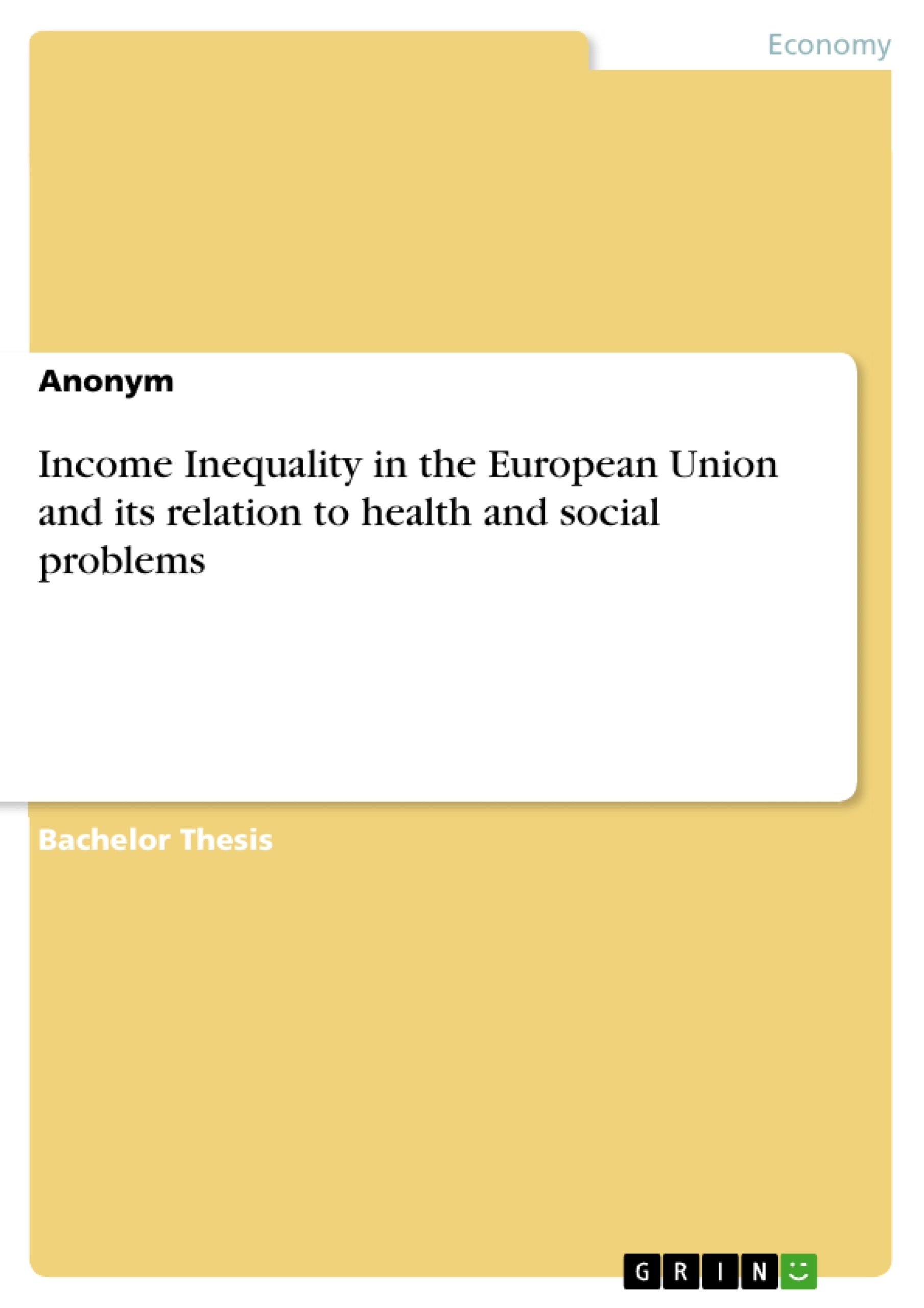Why are health and social problems in the EU related to income inequality within countries, rather than per capita income?
With regard to Wilkinson and Pickett’s studies in “The Spirit Level” (2010), I am demonstrating the relation of health and social problems with income inequality for EU countries and compare the results with the European Social Policy Models described by Boeri (2002) and Sapir (2005).
At least since the “Occupy Wall Street” and the “We are the 99 percent” movements started to dominate newspaper headlines, the problem of unequally allocated disposable income has gained more attention by policy makers around the globe. In reconstruction times following WWII, gains in income have been shared almost equally between income quintile groups until the late 1970s - when the Great Convergence ended.
Politicians and economists have therefore increased their interest in finding other indicators for economic performance rather than only casting an eye on GDP growth. I will thus investigate why health and social problems are far more related to income inequality rather than GDP growth or per capita income. To understand the situation especially in the European Union (EU) I will subsequently explain the underlying circumstances.
Inhaltsverzeichnis (Table of Contents)
- Introduction
- Theoretical Background
- Data and Methods
- Empirical Results
- Descriptive Analysis
- Clustering of the European Union
- Policy Implications
- National policies
- Supranational policies
- Conclusion
Zielsetzung und Themenschwerpunkte (Objectives and Key Themes)
The main objective of this thesis is to investigate the relationship between income inequality within EU countries and health and social problems, comparing these findings to existing studies on the subject. The study specifically seeks to demonstrate how health and social problems correlate with income inequality, drawing on insights from Wilkinson and Pickett's "The Spirit Level" (2010), and to analyze the relationship between these factors and the European Social Policy Models described by Boeri (2002) and Sapir (2005).
- The relationship between income inequality and health and social problems within EU countries.
- Comparison of empirical findings with the theoretical frameworks of Wilkinson and Pickett, Boeri, and Sapir.
- The impact of income inequality on social mobility and its influence on intergenerational wealth transfer.
- The role of social policy models in mitigating income inequality and its associated problems.
- The significance of income inequality as a factor influencing the effectiveness of EU regional policy initiatives.
Zusammenfassung der Kapitel (Chapter Summaries)
The Introduction chapter sets the context for the study by highlighting the increasing focus on income inequality and its implications for economic performance, especially in the European Union. It emphasizes the EU's commitment to addressing social discrepancies and promoting inclusive growth through its Europe 2020 strategy and regional policy initiatives. The chapter also examines the limitations of GDP per capita as a sole indicator of socio-economic wellbeing and introduces the use of health and social problem indices to assess the relationship between income inequality and welfare.
The Theoretical Background chapter delves into the key concepts and theories related to income inequality and its connection to health and social problems. It introduces the work of Wilkinson and Pickett, who argue that higher levels of income inequality are linked to a range of negative societal outcomes, including poor health and social cohesion. It also explores the European Social Policy Models, as described by Boeri, which examine the role of social welfare programs in mitigating income inequality.
The Data and Methods chapter outlines the data sources and methodologies used for the empirical analysis. It explains the specific indicators used to measure income inequality, health and social problems, and social policy models. The chapter also discusses the limitations of the data and provides justification for the chosen statistical techniques.
The Descriptive Analysis section of the Empirical Results chapter presents a detailed analysis of the data, focusing on key trends in income inequality and health and social problem indicators across EU countries. The findings are discussed in relation to existing research and highlight any significant differences or patterns.
The Clustering of the European Union section of the Empirical Results chapter analyzes the EU member states using cluster analysis. It seeks to identify groups of countries with similar characteristics based on income inequality, health and social problems, and social policy models. This analysis aims to provide a deeper understanding of the relationships between these factors and to identify potential policy interventions.
The Policy Implications chapter explores the practical implications of the findings for both national and supranational policy initiatives. It suggests potential solutions to address income inequality and its associated problems, considering the specific needs and challenges of different EU member states. The chapter also discusses the role of the EU in coordinating policy efforts and promoting effective regional development strategies.
Schlüsselwörter (Keywords)
Key terms and topics explored in this study include income inequality, health and social problems, European Union, social policy models, regional development, inclusive growth, social mobility, and the "Spirit Level" framework. The analysis focuses on the relationship between these factors and their implications for European welfare, highlighting the importance of addressing income inequality to foster social cohesion and improve the overall well-being of European citizens.
- Quote paper
- Anonym (Author), 2013, Income Inequality in the European Union and its relation to health and social problems, Munich, GRIN Verlag, https://www.grin.com/document/293354



